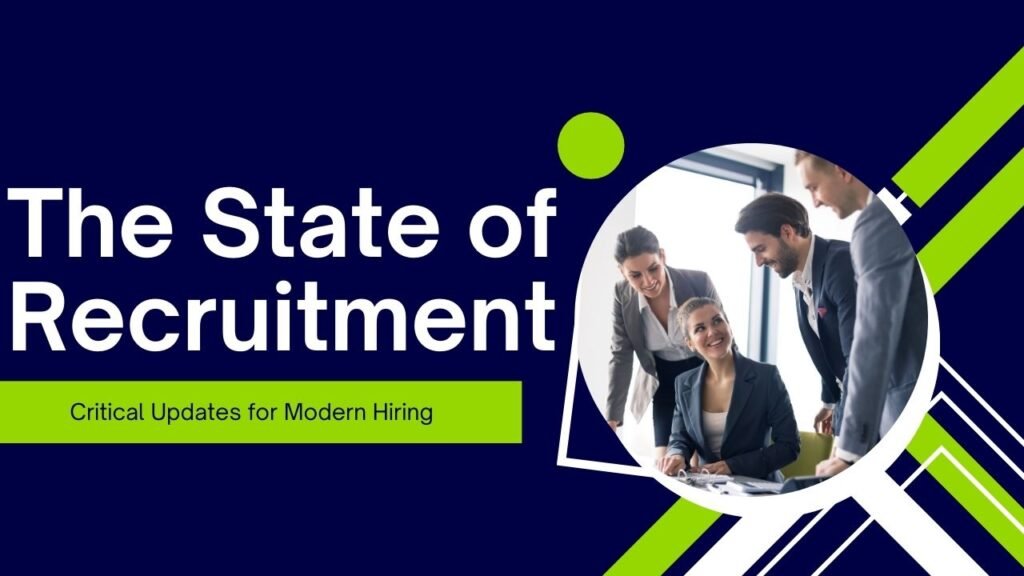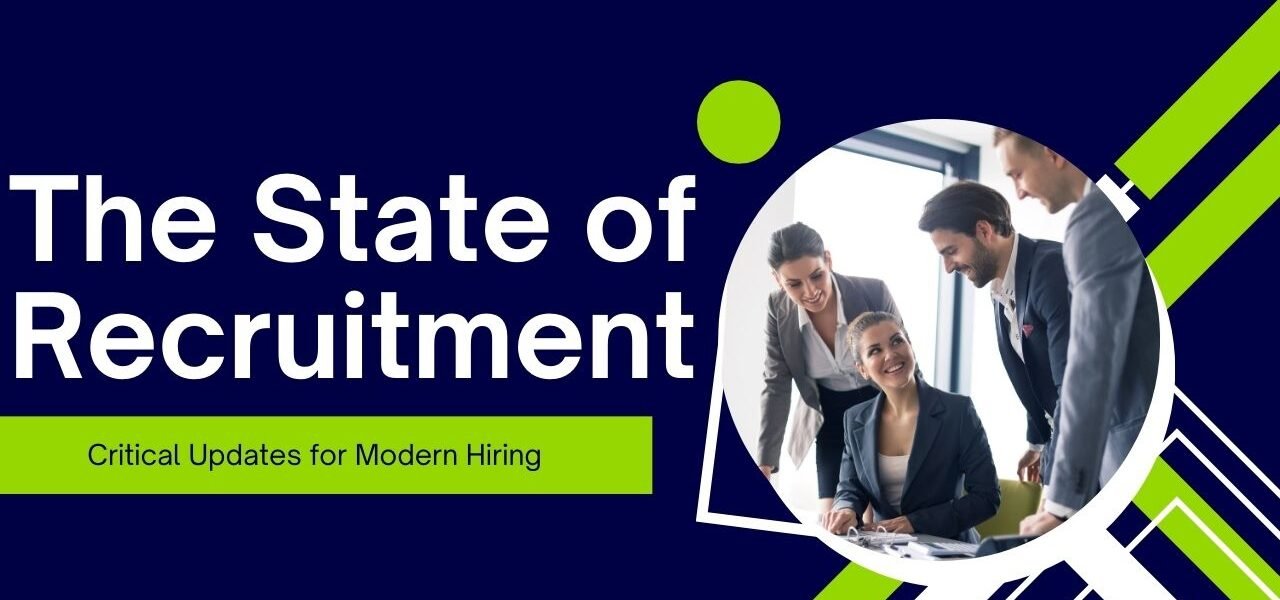The state of recruitment is evolving rapidly. In 2024, recruitment updates are vital for organizations aiming to attract the best talent. Changes in technology, candidate expectations, and workplace dynamics impact how companies hire. To stay competitive, businesses must understand these trends. Let’s explore the critical updates in recruitment and how they shape modern hiring.

Understanding Candidate Expectations
Candidate expectations are shifting dramatically. Today’s job seekers prioritize company culture, work-life balance, and career growth. They seek workplaces that align with their values. Therefore, organizations must highlight these aspects in their recruitment updates.
Firstly, companies should promote their values and mission. This transparency attracts candidates who resonate with the organization’s goals. Additionally, showcasing employee testimonials can provide insights into the company culture. This approach humanizes the brand and builds trust with potential candidates.
Moreover, flexibility in work arrangements is crucial. Many candidates now prefer remote or hybrid work options. Companies that offer such flexibility stand out in a competitive job market. Highlight these options in job postings to attract a broader talent pool.
The Role of Technology in Recruitment
Technology is transforming recruitment. Advanced tools streamline the hiring process and improve efficiency. Recruitment updates now emphasize the importance of utilizing technology effectively.
For instance, applicant tracking systems (ATS) have become essential. ATS simplifies resume screening and shortlisting candidates. These systems save time and reduce administrative burdens. By automating these tasks, recruiters can focus on building relationships with candidates.
Additionally, video interviewing platforms have gained popularity. These tools allow for seamless remote interviews. They save time and resources while expanding the reach of recruitment efforts. Candidates from diverse locations can participate, enhancing the talent pool.
Moreover, artificial intelligence (AI) plays a significant role in recruitment updates. AI can analyze candidate data and identify the best fits for roles. By using AI, organizations can make data-driven decisions that lead to better hiring outcomes.
Embracing Diversity and Inclusion
Diversity and inclusion (D&I) are critical in modern hiring. Organizations recognize the value of diverse teams. A diverse workforce fosters innovation and improves problem-solving. As a result, D&I has become a focal point in recruitment updates.
To promote diversity, companies must reassess their hiring practices. This may include revising job descriptions to eliminate biased language. Using inclusive language attracts a broader range of candidates.
Additionally, implementing blind recruitment can minimize bias. This approach removes identifying information from resumes. It allows hiring managers to focus on qualifications rather than demographics.
Training for hiring teams on D&I principles is essential. Educating staff on unconscious bias helps create an inclusive culture. By fostering awareness, organizations can ensure that diversity becomes an integral part of their hiring strategies.
The Importance of Employer Branding
Employer branding is a crucial component of recruitment updates. A strong employer brand attracts top talent. Job seekers often research companies before applying. Therefore, companies must actively manage their online presence.
Start by showcasing company culture on social media. Share behind-the-scenes content, employee stories, and community involvement. This visibility builds an authentic image of the organization.
Additionally, consider leveraging review sites like Glassdoor. Encourage employees to share their experiences. Positive reviews enhance your employer brand and attract potential candidates.
Moreover, a well-designed career page can make a significant impact. Ensure that it reflects the company culture and values. Use engaging visuals and clear messaging to convey what makes your organization unique.
Continuous Learning and Development
Continuous learning is essential in today’s fast-paced job market. Organizations must invest in employee development to remain competitive. This commitment attracts candidates eager to grow their skills.
Promoting a culture of learning benefits both employees and the organization. Encourage team members to pursue certifications or attend workshops. Providing opportunities for growth fosters employee satisfaction and retention.
Mentorship programs can also be effective. Pairing experienced employees with newcomers promotes knowledge sharing. This collaboration helps integrate new hires into the company culture.
Additionally, consider offering online learning platforms. These resources allow employees to learn at their own pace. This flexibility accommodates various learning styles and schedules.
Adapting to Remote Work Trends
Remote work trends continue to influence recruitment updates. Many candidates now prefer flexible working arrangements. Organizations must adapt to this demand to attract top talent.
Highlighting remote work options in job postings is essential. Clearly outline the policies and expectations related to remote work. This transparency helps candidates assess whether they align with the organization’s approach.
Furthermore, investing in remote collaboration tools is crucial. Technologies like Zoom and Slack enhance communication among remote teams. Ensuring that employees have access to these tools fosters connection and productivity.
Consider implementing a robust onboarding process for remote employees. Providing resources and support helps new hires acclimate to their roles. This investment in employee success improves retention rates.
Agile Recruitment Practices
Agile recruitment practices are becoming essential in 2024. Organizations must respond quickly to changing market demands. Adopting agile methodologies allows for flexibility in the hiring process.
Regularly assess recruitment goals and strategies. Analyze data to identify areas for improvement. Be willing to adjust approaches based on feedback and performance metrics.
Collaboration among hiring teams is vital. Regular check-ins ensure everyone is aligned with recruitment objectives. This teamwork fosters accountability and transparency.
Additionally, consider using recruitment analytics to inform decision-making. Data-driven insights help organizations refine their strategies and improve outcomes. By staying agile, companies can adapt to the ever-changing recruitment landscape.
Conclusion
The state of recruitment is constantly evolving. Understanding the critical updates for modern hiring is essential for success. Prioritize candidate expectations, leverage technology, and embrace diversity. Focus on employer branding and invest in continuous learning.
Additionally, adapt to remote work trends and implement agile practices. By staying informed and proactive, organizations can enhance their recruitment strategies. Ultimately, these efforts will lead to a stronger workforce and a brighter future for your organization.





